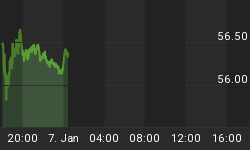Volumes remained light on Tuesday, but the clouds definitely darkened some. Bonds responded to weak economic data and a negative turn in Europe by rallying 12bps to put the 10y note at 2.11%. TIPS actually kept pace, which is unusual (10y TIPS rallied 11bps), and commodity indices - even more unusually - rallied 0.6% even though stocks fell 2%.
The data was surprisingly worse-than-expected. Consumer Confidence for October took a further dive to 39.8, which was the worst print since the early 2009 (see Chart) snap-back in confidence in the first hundred days of the Obama Administration. Forget what I said about the optimistic American consumer! This is a bad number, and it is truly remarkable that it could be this bad for this long.

Consumer Confidence is at a low ebb for Obama's Administration,
excepting the follow-through during the first months he was in office.
Meanwhile, the headline in the middle of the day was that the EU meeting of finance ministers, due to be held tomorrow, was canceled. The summit meeting between EU heads of state is still scheduled, but the cancelation of the ministerial meeting suggests no deal is imminent. Indeed, some of the news off the Continent today suggested that there are widening cracks in the edifice.
The upshot of this is that if the equity market was rallying because of optimism about the evolution of Q4 economic data, it was probably ahead of itself since the early indications are that the data could be quite weak. If the equity market was rallying because of optimism about the EU summit and the potential for resolution of the Greek crisis, then it was also at least ahead of itself.
Stocks may be rallying, though, because of the poor opportunities elsewhere and the huge amounts of liquidity that is working its way into the system, and we have to be wary of blithely dismissing that possibility. The liquidity is not just sitting all in bank reserves any longer, either. I've detailed the recent rise in M2, which some people pooh-pooh because they view it is a symptom of the weakness of European banks. But the chart below gives more cause for concern (if inflation is your worry) or optimism (for what this says about the availability of credit.

52-week growth in commercial bank credit is expanding after years of contraction.
This chart shows that commercial bank credit is now rising at slightly faster than a 1% per year rate. That's not all wine and song, but it's much better than it was over the 2009-2010 period when bank credit was contracting sharply due to much tighter lending standards and plentiful defaults. Note that the aggregate amount of commercial bank credit, at 9.3 trillion, is still well below the 9.9 trillion of mid-October 2008 (after Goldman and Morgan Stanley abruptly became commercial banks). So this is good news for the economy, but only just.
The bad news currently outweighs the good, to be sure. But for the first time in years, there is a glimmer of light in the darkness. I'm not talking about a one-month surge in car sales due to cash-for-clunkers or a surge in hiring around the Census. The slow rise in bank credit is not a manipulation, but an actual improvement. Banks are lending again - not a lot, and credit standards are still quite high, but they are lending.
If Europe spirals out of control, it will snuff out this glimmer of light. It is still far too early to be thinking of getting bullish on equities at a Shiller P/E of 20.5. Bank lending was miserable for several years and it will be some time before it's truly healthy again. But there will eventually be an end to the tunnel. The worrisome fact of course is that renewed lending will increase the pressure on prices and inflation is quite likely to keep rising with no policymaker will to restrain it for some time (not to mention an explicit promise not to).
On Wednesday, the Commerce Department releases September Durable Goods (Consensus: -1.0%, +0.4% ex-transportation) and the Census Bureau publishes the September New Home Sales report (Consensus: 300k from 295k). Being September numbers, they may not be as bad as today's glimpse of October, but Europe still dominates anyway.















